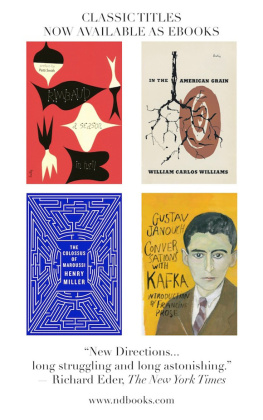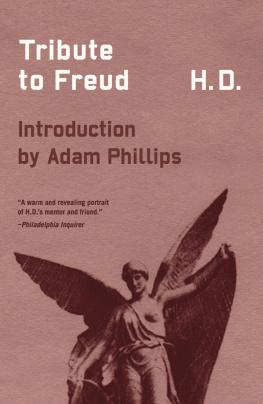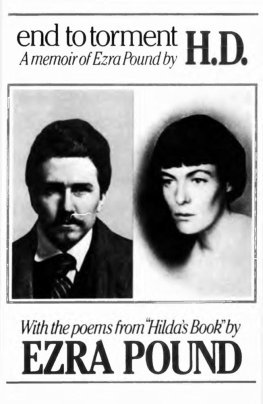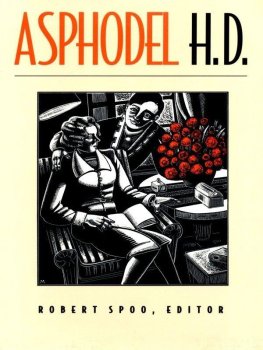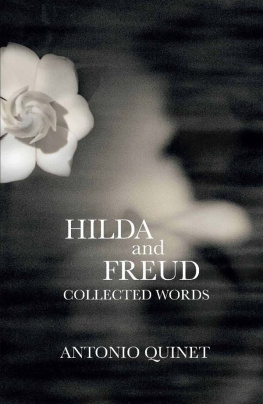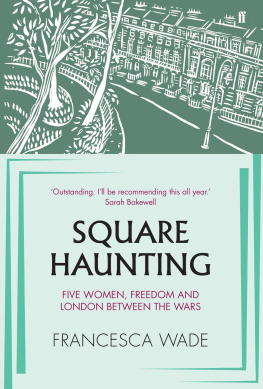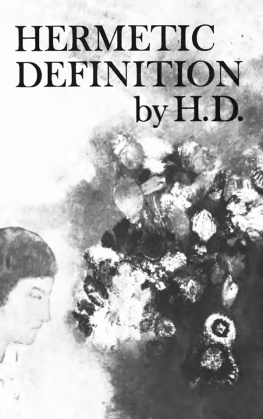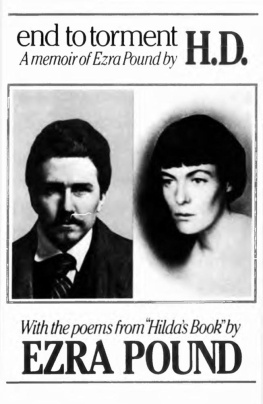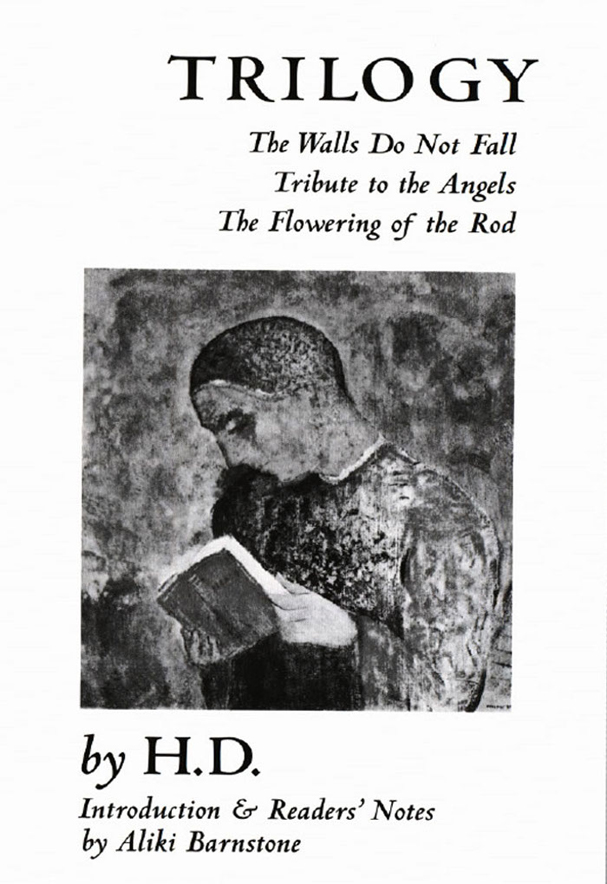INTRODUCTION
In
Tribute toFreud,H.D. asks, Do I wish myself, in the deepest unconscious orsubconscious layers of my being, to be the founder of a new religion?
Trilogy is H.D.s complex answer to this question. If with this astonishingbook of poetry H.D. does not establish a new religion, she certainly makes itnew while creating an eclectic scripture that derives from Egyptian, Greek,and biblical traditions. Despite her enormous output and radical poetics, H.D.sreputation lingers unfairly back in the early decades of the century, under therestrictive label of Imagist,one which she adamently rejected.
Trilogy, however, (1944) establishes her as a major poet among the othermodernistsa large-minded and philosophical visionary.
Like T.S.EliotsThe Waste Land, William Carlos WilliamsPaterson, and Ezra PoundsCantos, Trilogy is an epic poem that takes the reader on the poets political,spiritual, philosophical, and artistic quest. Each poet, like their precursorsMilton, Whitman, and Baudelaire, has composed a personal bible;Trilogy is H.D.s multi-layered sacred text. In comparingTrilogy to her earlier work, H.D. wrote: This is not thecrystalline poetry that my early critics would insist on. It is nopillar of salt nor yet of hewn rock-crystal. It is the pillar of fire by night, thepillar of cloud by day.
She refers to the story of the children of Israel escaping Egypt in Exodus13.21: And the Lord went before them by day in a pillar of a cloud, to leadthem the way; and by night in a pillar of fire, to give them light; to go by day andnight. Her poem, she implies, is an incarnation of Gods words, showing thepath. She asks the reader to venerate both her voice and the figure of Woman aspoet, mystical seer, and god. H.D. wroteTrilogy during World War II. She had not left London during the Germanbombing of the city.
The orgy of destructions to be witnessed and livedthrough in London, that outer threat and constant reminder of death, shewrote, drove me inward (NHP, v). SoThe Walls Do NotFall begins with An incident [bombing] here and there, and rails gone (for guns) from your (and my) old town square. In a letter to Norman Holmes Pearson, she reflects upon hercomparison of London to Egypt in the first section ofWalls; the ruins of both places expose the relics of our unconsciousworlds: The parallel between ancient Egypt and ancient London is obvious.In [section] I the fallen roof leaves the sealed room open to the airis of course true of our own house of lifeouter violence touching thedeepest hidden subconscious terrors, etc., and we see so much of our past onshow, as it were another sliced wall where poor utensils show likerare objects in a museum. Egypt? London? Mystery, majicthat I havefound in London! (NHP, vii). H.D. Trilogy asserts the power of the word over the sword, for withoutidea and the Words mediation, // [the sword] would have remained /unmanifest. Trilogy asserts the power of the word over the sword, for withoutidea and the Words mediation, // [the sword] would have remained /unmanifest.
While the German planes roared overhead, bombs falling, she hearda more powerful voice, which she calls Dream / Vision: though there was whirr and roar in the high air there was a Voicelouder. Trilogy synthesizes the Judeo-Christian tradition (including Gnosticism)with the Egyptian and Greek pagan traditions. H.D.s book reveals that the gods,goddesses, and the figures in the Bible are the samedifferentthe same attributes, different yetthe same as before. She brings together the old and the new, the scientific andpragmatic, and the esoteric and mystical. The differences betweenpeopleespecially their religious differencesignite war.Trilogy shows that differences are also similarities or affinities that,with enlightenment, can ignite love rather than war, creation rather thandestructionand resurrection out of Apocalypse: chasm, schism in consciousness must be bridged over; we are each, householder, each with a treasure Love, which brings difference together in harmony, is the answer:only love is holy. Jesus Christ is the divine embodiment of love; sotoo and with equal importance is the woman god: Isis, Astarte, Aphrodite, Venus,Mary, The Lady.
As the poem itself points out,Trilogy is a palimpsest,in which one might see the old writing under the new, beneathlayers of transparencies. This quality of being different yet the same asbefore intentionally mimics the typological structure of the Bible, which isitself a palimpsest of pre-biblical legends. The New Testament gospels arereworkings of Old Testament texts and of each other. H.D. writes: In no wise is the pillar-of-fire that went before different from the pillar-of-fire that comes after Here, she refers to the pillars-of-fire in both the Old and NewTestaments. H.D. bridges the schism inconsciousness by revealing that the light of God is always the light of God,whether it is ancient Egyptian or Greek, Old or New Testament, male orfemale. Trilogy is also deeply informed by H.D.s work as an analysand with Sigmund Freud Janus was the God who faced two ways and was the guardian of doorways androads. Trilogy is also deeply informed by H.D.s work as an analysand with Sigmund Freud Janus was the God who faced two ways and was the guardian of doorways androads.
Freud was guardian of the doorway between the conscious and unconsciousminds. H.D.s book,Tribute to Freud, is indeed a tribute to the man who revolutionized the way humanconsciousness is understood. It is also a guide to H.D.s own philosophy andpoetics, as can be seen in her interpretation of Freuds philosophy ofdreams: He had said, he had dared to say that the dream had its worth andvalue in translatable terms, not the dream merely of a Pharaoh or a Pharaohsbutler, not the dream merely of the favorite child of Israel, not merely Josephsdream or Jacobs dream of a symbolic ladder, not the dream only of the Cumaean Sybilof Italy or the Delphic Priestess of ancient Greece, but the dream of everyone,everywhere. He had dared to say that the dream came from an unexplored depth inmans consciousness and that this unexplored depth ran like a great stream or oceanunderground, and the vast depth of that ocean was the same vast depth that today, asin Josephs day, overflowing in mans small consciousness, produced inspiration,madness, creative idea, or the dregs of the dreariest symptoms of mental unrest anddisease. He had dared to say that it was the same ocean of universal consciousness,and even if not stated in so many words, he had dared to imply that thisconsciousness proclaimed all men one; all nations and races met in the universalworld of the dream; and he had dared to say that the dream-symbol could beinterpreted; its language, its imagery were common to the whole race, not only ofthe living but of those ten thousand years dead. (TF, 71) In her elegantly passionate distillation of Freud, she reveals herabsorption in his theories as well as her own departures from them. (TF, 71) In her elegantly passionate distillation of Freud, she reveals herabsorption in his theories as well as her own departures from them.
She incorporatesFreuds ideas into her philosophy, yet she does so on her own terms: Butthere was an argument implicit in our very bones. For all her admiration forhis prophetic discoveries, H.D. asserts: I was a student, working under thedirection of the greatest mind of this and perhaps many succeeding generations. Butthe Professor was not always right (TF, 18). The hieroglyph of thedream includes religious figures, both biblical and pagan. For Freud theseare figures revealed through empirical psychological methods, whose significance isnot transcendental but scientific: [He) shut the door on transcendentalspeculations or at least transferred this occult or hidden symbolism to the occultor hidden regions of personal reactions, dreams.

